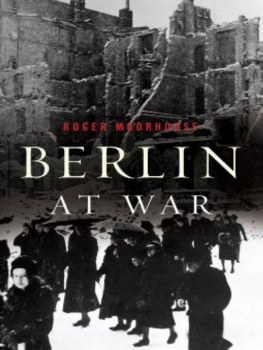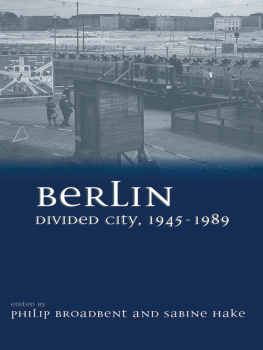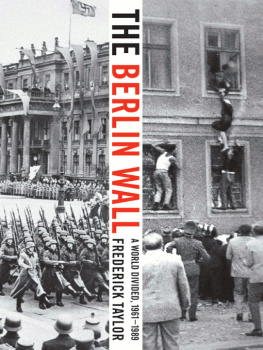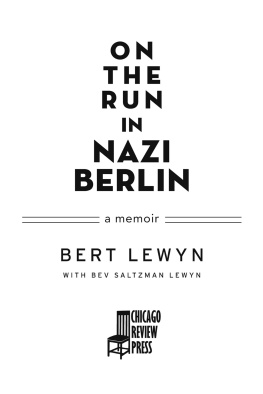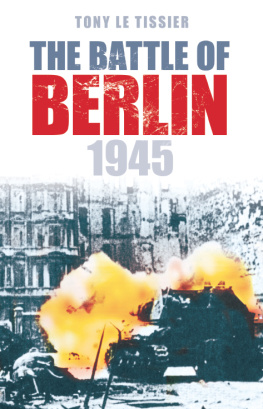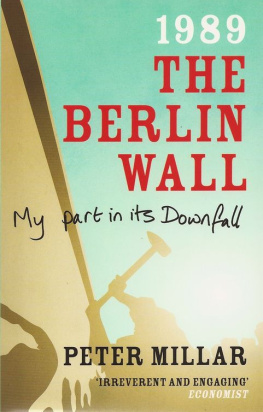CRITICAL ACCLAIM FOR
GHOST DANCE IN BERLIN
A fascinating portrait of one of the worlds most complex and misunderstood cities. With the keen eye of an American-born son of Jewish refugees, Wortsman captures Berlin in vignettes that are enlightening, moving, and darkly funny.
Tony Perrottet, author of The Sinners Grand Tour
Peter Wortsman brings Berlin to lifethat complex, beguiling, and often euphoria-inducing citywith grace, wit, and beauty. A must read.
David Farley, author of An Irreverent Curiosity
Ghosts dance and flicker in this vivid and haunting memoir of a magnificent, tormented, once divided city. Peter Wortsman writes with passionate nostalgia for a refined and traumatized civilization. Berlin drives the largest economy in Europe, and yet most of us hold outmoded stereotypes of Germans, and no clue at all about their emotional depths. Wortsmans Jewish-Austrian roots, his fluency with the language, the culture and the angst of Germany make him the perfect guide to all aspects of life in Berlinthe best and the wurst of it.
Tim Ward, author of Zombies on Kilimanjaro
Wortsman tears down the wall between East and West Germany, between memoir and reportage, between reflection and examination.
Tom Miller, author of Trading with the Enemy
PRAISE FOR PETER WORTSMAN
I was particularly struck by the account of the visit to Auschwitz [in Snapshots and Souvenirs]. The behavior of the people was wonderfully human and movingthe sort of thing even the best writers find it almost impossible to invent. The unexpected in human behavior is difficult to take out of the air, as opposed to the usual, which anyone can invent. So that it is precisely these unforeseen details which establish the authenticity of the text, and which give it its literary valueexcellent.
Paul Bowles, author of The Sheltering Sky
A Modern Way to Die is a fantastic book and I thoroughly enjoyed it. I have never read anything quite like this, but my enjoyment was due to more than just novelty, it was a response to marvelous writing, wonderful craft, and the breath of imagination. [Wortsman] succeeded so well in his craft and art that it reads artless and spontaneous, which to me is the highest of compliments.
Hubert Selby, Jr., author of Last Exit to Brooklyn
Wortsman hangs with the masters.
A. Scott Cardwell, The Boston Phoenix
His work reminded me some of E. B. Whites New Yorker stuffobservations turned into little reads but with a modernist twist.
Ruth Lopez, The New Mexican
Wortsman achieves a level of spontaneity and accessibilityto which most writers can only aspire.
David Ulin, The L.A. Weekly
Ghost Dance
in Berlin
A Rhapsody in Gray
Ghost Dance
in Berlin
A Rhapsody in Gray
Peter
Wortsman

Travelers Tales
an imprint of Solas House, Inc.
Palo Alto
Copyright 2013 Peter Wortsman. All rights reserved.
All interior photographs by Peter Wortsman 2013.
Travelers Tales and Solas House are trademarks of Solas House, Inc., 2320 Bowdoin Street, Palo Alto, California 94306, www.travelerstales.com
Production Editor: Christy Quinto
Page Layout: Cynthia Lamb, using the font Janson MT
Cover Design: Kimberly N. Coombs
Cover Photographs: Peter Wortsman; Reichstag Dome, Berlin Vangelis
Author Photograph: Jean-Luc Fievet
Distributed by Publishers Group West, 1700 Fourth Street, Berkeley, California 94710.
Library of Congress Cataloging-in-Publication Data
Wortsman, Peter.
Ghost dance in Berlin : a rhapsody in gray / Peter Wortsman. -- First edition.
pages cm
Includes bibliographical references.
ISBN 978-1-60952-079-3
1. Berlin (Germany)--Description and travel. 2. Berlin (Germany)--History. 3. Berlin (Germany)--Social life and customs. I. Title.
DD860.W67 2013
943.155--dc23
2012050191
First Edition
10 9 8 7 6 5 4 3 2 1
Berlin comprises, first, the bequest of untold dead, and second, the doings of the living.
ALFRED DBLIN
To Claudie, Jacques, and Aurlie, my beloved fellow travelers, And to the memory of Alfred and Dora Wortsman
CONTENTS
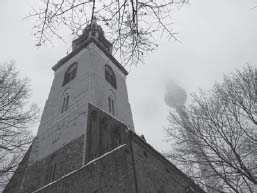
The last time I visited Berlin I made eye contact with the most beautiful woman in the world, only she was stone-hearted and more than four thousand years old, and didnt speak a word of English or German, or any other living tongue. I looked her up again not long ago but she had moved. Displaced from the banks of the Nile to a palace in Charlottenburg, and from there to the Museumsinsel in the Spree, shed changed lodgings yet again from the Altes to the recently resurrected Neues Museum, where she finally found a room of her own, her elusive look locked forever in a glass case on the edge of a smile. This being Berlin, all bets are on where Frau Nefertiti will turn up next.
Next door in the Pergamon Museum the packaged remains of several empires are pickled and preserved, including a section of the walls of Babylon and a scale model of the ill-fated Tower of Babel, the World Trade Center of antiquity, downed by an angry deity. Its a hop, skip, and a jump to the site of the old Stadtschlo, once an emperors urban residence, flattened by Allied bombing and post-War ideological bulldozers, now a hole in the heart of the city. Its a stones throw from there to the TV Tower at Alexanderplatz, the obsolete symbol of another lost illusion formerly upheld with a since-fallen wall. But the traffic rushes on and pedestrians throng the stately thoroughfare Unter den Linden, at the tail end of which the old Brandenburg Gate is open for business again.
Built on a heap of urban impulses, Berlin is a phoenix forever being reborn. Eight centuries old, it has managed with an uncanny resilience to remain ever young by reinventing itself time and again to suit an ever-changing geopolitical reality.
A city in constant flux, very much like New York, Berlin has kept reinventing itself, while going through makeover after makeover: primped up from provincial backwater to Prussian seat of government; built up by Bismarck into the Biedermeier Hohenzollern Imperial Hauptstadt, only to be deconstructed, upon the empires sudden collapse, into the short-lived Weimar Republican fever-dream of modernity and capital of the avant-garde; enshrined as grandiose Thousand-Year Reichstadt and redubbed Germania, only to be reduced a few years later to an occupied and divided rubble heap at the fault line of history; revived in a schizoid state of post-World War II duality; reunited and redefined yet again in 1989 when the Wall came tumbling down.


